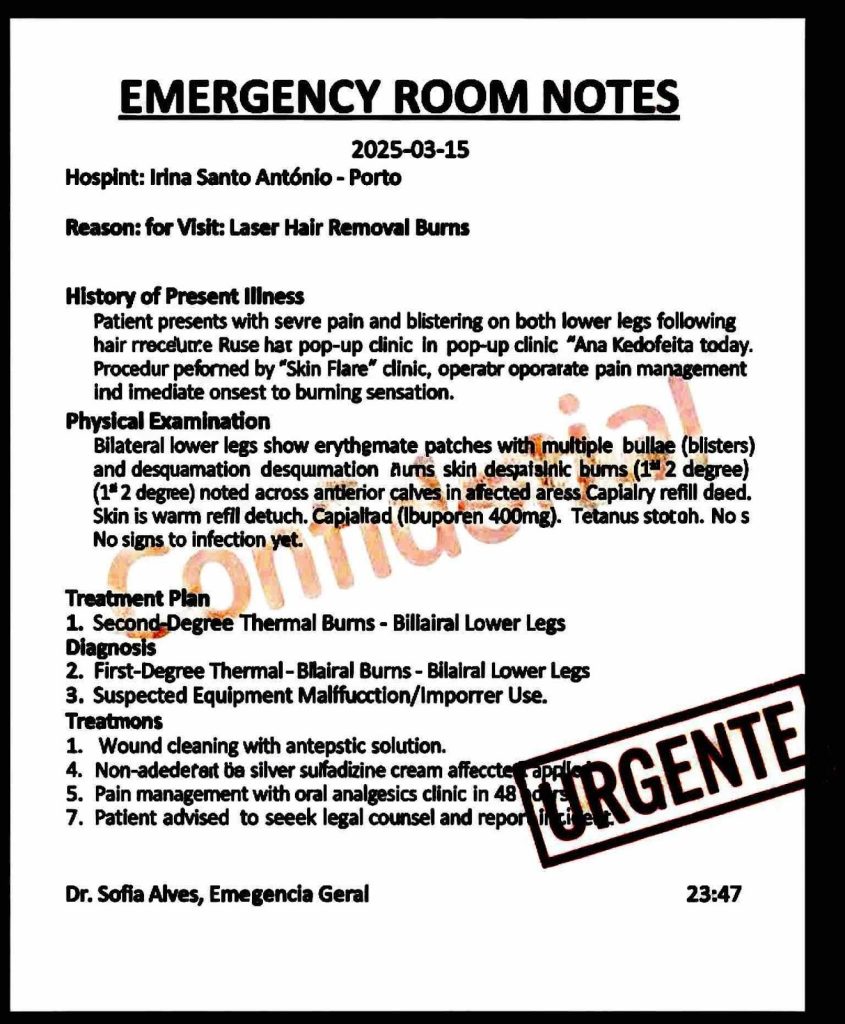6 Updated Medical Device Marketing Strategies
Over the next seven years, the medical device market will nearly double in size (from USD 495.46 billion in 2022 to 964.90 billion in 2030).
There are three main reasons for this:
- The United States has a large aging population and a long history of chronic disease.
- The Patient Protection and Affordable Care Act of 2010 has increased access to healthcare services for previously uninsured populations.
- The coronavirus pandemic has significantly increased the usage of “smart” wearable medical technologies, like smartwatches and fitness trackers.
Emergo, the premier service provider to the medical device industry, says, “there is a need for cost-effective medical devices to meet the increasing demand for care, the cost constraints of the new healthcare system, and control the rising healthcare spending.”
There’s no better time to build an ironclad medical device marketing strategy and fortify your loyal customer base.
However, developing a marketing strategy that attracts new audiences and keeps them engaged is no small task.
In this post, we’ve gathered six updated strategies to help you learn how to market medical devices and reach your marketing goals.
1. Know Your Buyer Persona
When selling healthcare technology products and medical devices, you must comprehensively understand your target market. The more detailed you are, the better.
A buyer persona is a semi-fictional representation of your ideal customer based on sales data and industry research. Depending on what you’re selling and which markets you’re selling them to, you may need several personas.
Targeting doctors is a good start, but pay special attention to audiences with significant influence over this primary target, like nurse practitioners, medical assistants, hospital procurement managers, office managers, or distributors.
Developing multiple personas helps adapt your medical device marketing strategy to your ideal customer’s preferences in your target markets.
When building a buyer persona, consider the who, what, when, where, why, and how. Pay particular attention to the following:
- Demographics (e.g., age, income, location, gender, race, education, or occupation)
- Customer Behavior (e.g., how customers decide what to buy, when to buy it, and how to do so)
- Customer Objectives (e.g., why customers are driven to buy)
- Customer Needs (e.g., what are their needs and how does your device help address those needs)
Analyzing your data and creating buyer personas to support your data will help you better understand your target audience, increase leads, and improve your inbound medical device marketing strategy.
2. Strike a Balance Between Evidence-Based and Relationship Marketing
Doctors, healthcare executives, and scientists are smart, but they’re also incredibly busy. When investing in medical devices, they want the facts and information they need to make a well-informed decision.
But starting with loads of data isn’t always the best marketing tactic.
As you likely know, breaking through the noise and capturing the attention of this highly analytical audience can be challenging. Why? You could share some of the best evidence-based data and still not make those crucial connections.
Doctors, scientists, and healthcare professionals are emotional beings and respond to the same emotional drivers as everyone else.
The facts and figures are certainly high on their priority list. But you’ve got to draw them into your marketing funnel with relationship marketing tactics that pique their curiosity and show them how your device solves their problems.
Let’s look at Medtronic, one of the world’s largest medical device manufacturers best known for developing battery-powered and miniature pacemakers. They leverage social media to share how their:
- Devices have helped small children and babies living with brain conditions
- Devices have transformed the lives of those living with movement disorders
- New technology platforms can improve how health systems communicate
In doing this, they share real-life examples of how their products change lives and show their target audience that they’re forward-thinking and innovative.
3. Reach More Prospects with Search Engine Optimization
If it’s been a while—or you’re an up-and-coming medical device company—it’s time to optimize your website. Search engine optimization (SEO) improves your organic ranking and supports your paid search campaigns. More on those later.
Optimize Keywords
First, research which keywords and phrases your target audience is searching for and write or refresh website content to include them. Long-tail keywords and semantically related phrases are also crucial for helping search engines better understand the topics you cover.
Once you have your primary keywords or phrases selected, be sure they are included in the following areas:
- Title tags
- Meta description tags
- Heading tags
- Body copy
Optimize User Experience
In addition to optimizing your content for SEO, optimizing your user experience is essential to keeping your website visitors engaged and clicking through your content.
Here are eight ways to do that:
- Increase white space around titles and text
- Use relevant and non-generic images that convey your brand
- Use H1, H2, and H3 tags and bullet points to make your content scannable
- Put key information in bullet points when possible
- Use color and bold font to make your hyperlinks stand out
- Use action words in your calls to action
- Increase how fast your pages load (I recommend 0-2 seconds for better engagement)
- Be responsive and mobile-friendly
4. Generate Leads with Paid Search (Pay-Per-Click, PPC)
In addition to optimizing your website content and user experience, PPC advertising is an effective medical device marketing strategy to increase website traffic and generate more revenue for your business. Many doctors search for specific medical devices or device services, so it’s important to make sure your ads appear first.
You can include a competitor’s name, product name, or trademark as a keyword…just don’t include it in the ad copy.
PPC ads appear first on Google before organic search results. This placement allows medical device companies to share their strongest messages, promotions, or offers with new prospects.
When combined with a well-optimized landing page designed to convert, paid search is one of the most effective ways to generate leads.
Expand your reach with the following types of paid search ads:
- Search engine ads (e.g., Google, Bing, Yahoo)
- Display ads (e.g., on-site advertisements)
- Social media ads (e.g., ads promoted directly in your feed)
- Mobile ads (e.g., text ads or banner ads on mobile websites)
5. Establish Loyalty and Trust With Content Marketing
Create useful, relevant, and timely content your audience finds helpful. This content will help draw traffic to your website to learn more about your products and services.
It’s also another excellent opportunity to leverage your keyword research. If you understand what’s important to your audience, you can create content tailored to their unique interests, needs, frequently asked questions, and most often searched words and phrases.
You don’t need to limit your content marketing strategy to your website, blog, and social media platforms.
Leverage these content types and more to improve thought leadership, increase conversions, and boost revenue:
- Email newsletters
- Webinars
- Infographics
- Videos
- eBooks
- Case Studies
- Events
- Direct Mail
- Print and Billboard Ads
- Connected TV (CTV) Ads
- Radio
Even if your new leads and prospects wait to convert, building an integrated marketing strategy will keep your brand, products, and services top-of-mind, so they’ll remember you when it comes time to purchase.
6. Increase Brand Recognition
The medical device market is expected to grow exponentially—here’s how you can create a medical device marketing strategy that attracts a crowd, gains their trust, and holds their attention:
a. Build a strong and consistent brand identity.
Keep your brand consistent across all channels and materials, but don’t overdo it. Your colors, logo, and design elements should be simple and easy to read and remember.
In addition to creating a memorable brand that stands out, it’s important to develop a consistent tone and voice for all online and offline content—so that no matter where your prospects, leads, and customers interact with your brand, they have a seamless experience.
b. Create and communicate a compelling value proposition.
A value proposition must convey three things: relevancy, quantified value, and differentiation.
i. Relevancy: This statement must tell customers how your products or services will solve their problems or improve their situation.
ii. Quantified value: This statement must outline specific values.
iii. Differentiation: This statement must tell customers why they should purchase your product over anyone else’s. Differentiating medical devices can be challenging due to commoditization and the fast pace of technological advances, but it’s critical to stand out in a competitive device market.
Whether you’re a well-known brand or a market disruptor, your value proposition must be easy to understand and written in a way that resonates with the customer.
Your brand is more than a slogan, catchphrase, or positioning statement—it’s your “Why.”
Healthcare Success is a full-service marketing and advertising agency dedicated to helping healthcare organizations attract and engage patients, enhance their brands, and ethically influence healthcare professionals.
c. Leverage storytelling in your brand messaging.
According to Gerald Zaltman, a professor at Harvard Business School, 95% of buying decisions are based on emotion.
Create inspiring stories around your brand, its products, and your audience. These allow you to communicate with your target audience in a compelling, digestible, and trustworthy way.
Using the Medtronic example again, they create an emotional connection with their readers by sharing how their products have positively impacted patient lives.
Adopting an emotional storytelling strategy builds trust, helps increase conversions, and reduces price sensitivity.
As the medical device market growth continues to accelerate, developing a robust medical device marketing strategy is more critical than ever.








